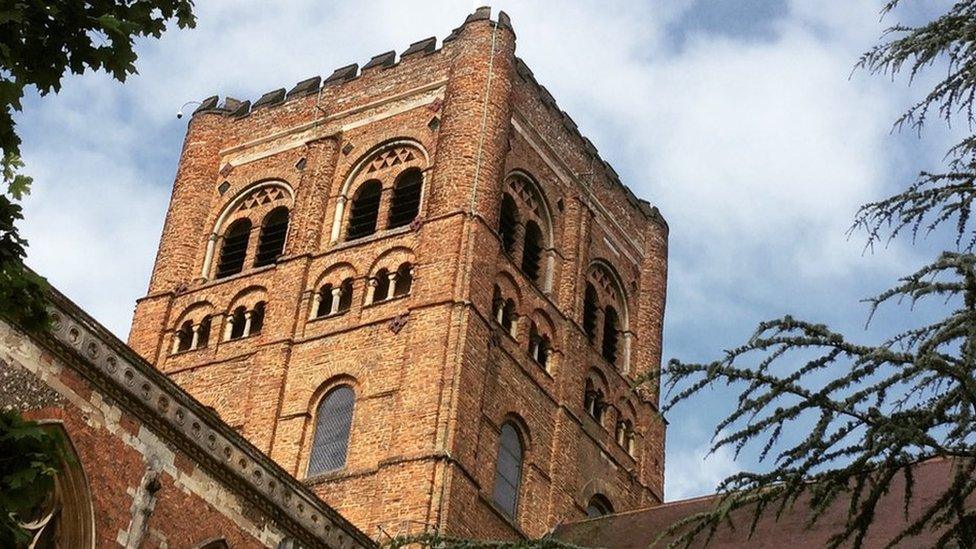St Albans Cathedral's Amphibalus shrine celebration postponed due to lockdown
- Published
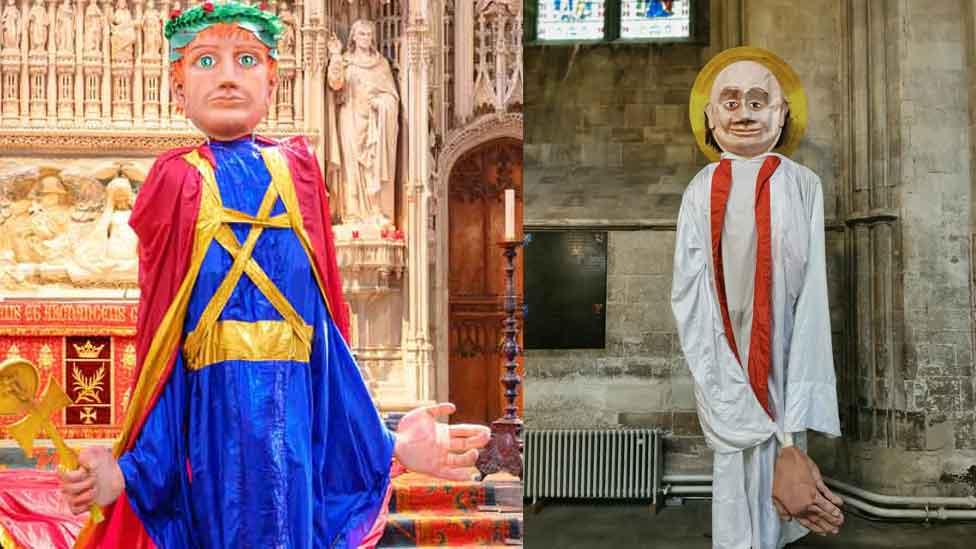
Puppets of St Alban and St Amphibalus usually take part in a parade every summer
The unveiling of a restored Christian shrine has been delayed after work on it was halted due to Covid-19.
The shrine of Amphibalus, the Christian priest who Alban exchanged clothes with to shield him from the Roman authorities, was due to be revealed at St Albans Cathedral this weekend.
Now, plans to highlight the role of the priest at this year's Alban Pilgrimage have been postponed or moved online, external.
The cathedral said it hoped to reveal the shrine in September.
The cathedral has been a site of worship for more than 1,700 years and the story of Britain's first saint is celebrated on the closest weekend to Alban Day on 22 June.
This year was due to be a celebration of Amphibalus to coincide with the shrine restoration.
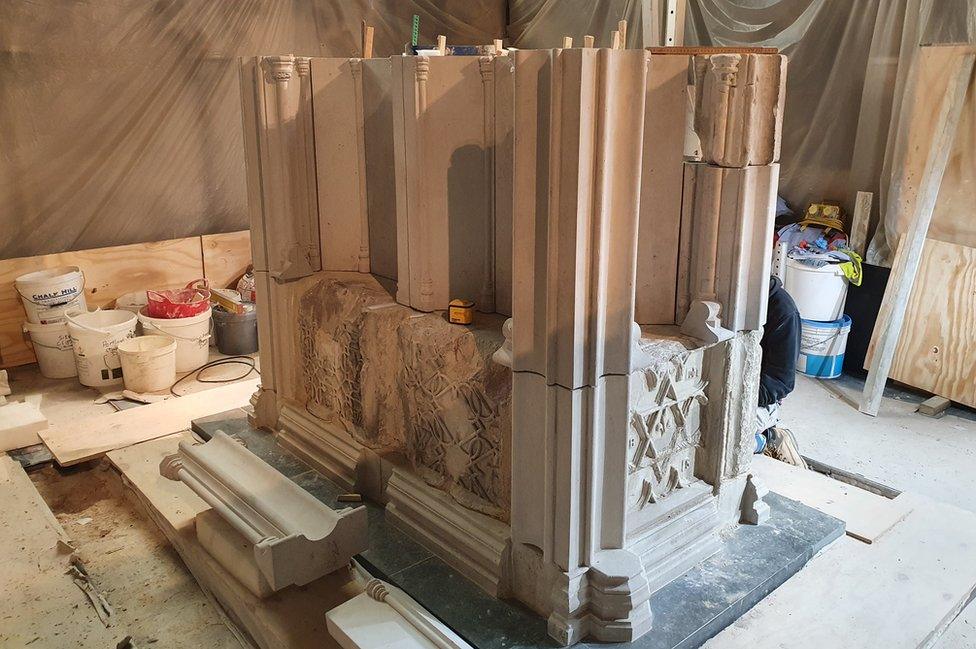
"It's an important Christian shrine and Amphibalus is important in St Alban's story but it was almost forgotten, tucked away in a dark corner," said Simon Ebbs
The grand unveiling, a walking trail from nearby Redbourne and a special service are being rearranged for a later date.
Work on the shrine began last year and was due to be completed by now, but it stopped in March when lockdown began.
Stone conservator Simon Ebbs, from Skillington Workshop, said: "The next day, we got as much stone as we could up to Yorkshire, where much of our carving is done in home workshops, so they could continue carving during lockdown if they could... which was relatively successful."
With two-thirds complete, it is estimated they are "still a good two and a half months from completion", he said.

Stone conservator, Simon Ebbs said it was "quite strange" to just find all their tools still in the same place when they returned to the site
Both the shrines of St Alban and St Amphibalus were demolished during the Reformation in 1539, but were rebuilt in the 19th Century.
The latest restoration includes recarving missing stonework from soft limestone, and moving the shrine from an "almost forgotten" corner of the cathedral to the Chapel of Our Lady of the Four Tapers.
"The Victorians didn't really do it any justice. There was quite a lot of it missing and any lost areas were simply made up with brickwork," he said.
"We are doing an honest repair, we're not here to make things up, we are replicating the original carvings to make a faithful reproduction."
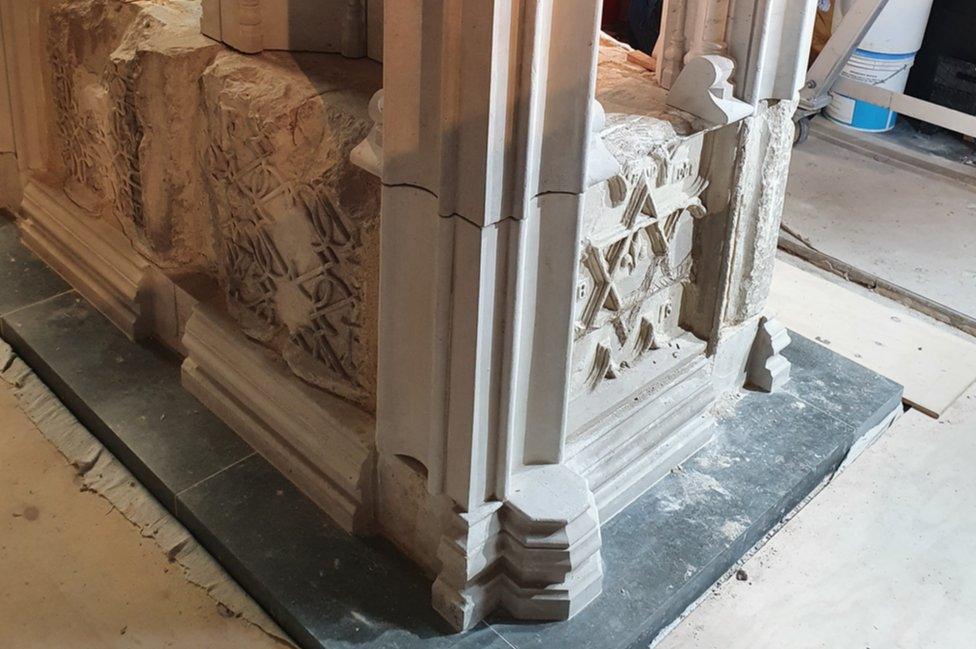
Amphibalus' shrine has been disassembled and moved from the north east aisle to the Lady Chapel
The Very Reverend Dr Jeffrey John, dean of the cathedral, said: "Without St Amphibalus there would have been no St Alban.
"We look forward to completing the reconstruction of his shrine, and to celebrating the encouragement of his prayers and presence with us in the Communion of Saints."

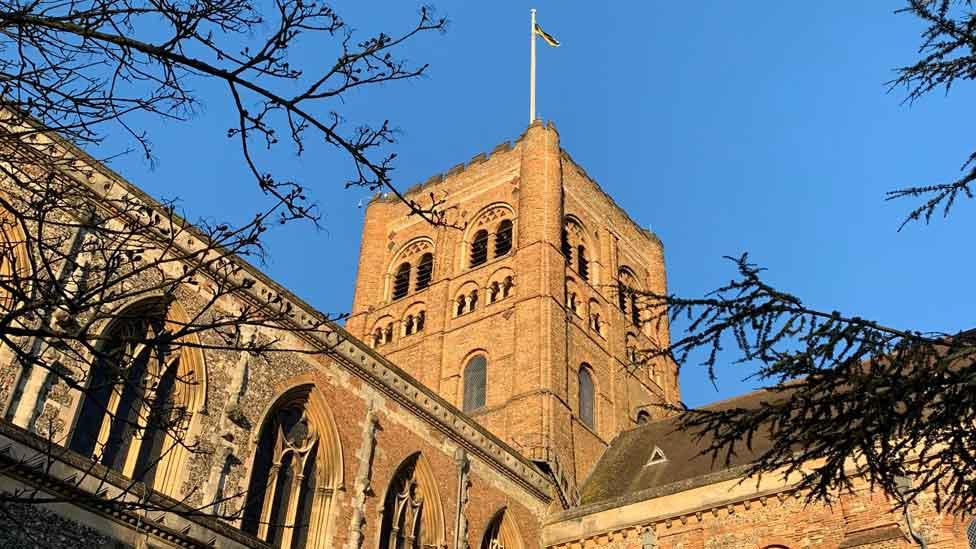
The cathedral, which sits on the site of the execution and burial of St Alban was due to hold a celebration of Christian priest Amphibalus
Alban and Amphibalus
In the early 3rd Century in the Roman city of Verulamium, Alban gave shelter to Amphibalus, a stranger and Christian priest fleeing from persecution
Alban was inspired by how important faith was to the priest and asked to be taught more about Christianity
When the Roman authorities caught up with Amphibalus, Alban exchanged clothes with Amphibalus and was arrested instead, allowing the priest to escape
Alban refused to renounce his new-found beliefs and the magistrate ordered he should receive the punishment intended for the escaped priest
Alban was beheaded on the spot where the cathedral now stands
According to the medieval scribes, St Amphibalus was executed and buried at nearby Redbourn where his bones were found in 1177
A shrine was built to hold the remains which were brought back to St Albans in June 1177
Source: St Albans Cathedral

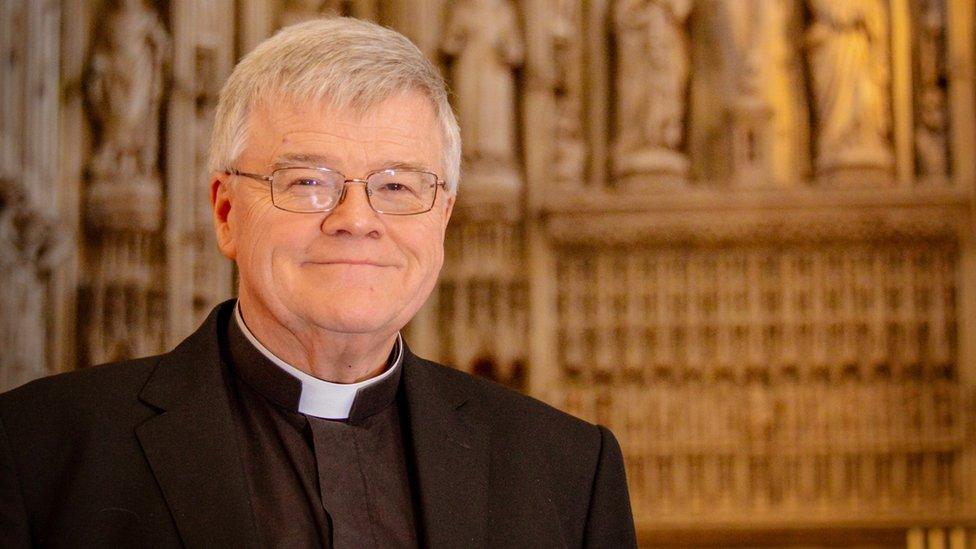
The Very Reverend Dr Jeffrey John said Amphibalus was "brave enough, like Alban, to give his own life in witness to Christ"

Find BBC News: East of England on Facebook, external, Instagram, external and Twitter, external. If you have a story suggestion email eastofenglandnews@bbc.co.uk, external
- Published29 October 2019
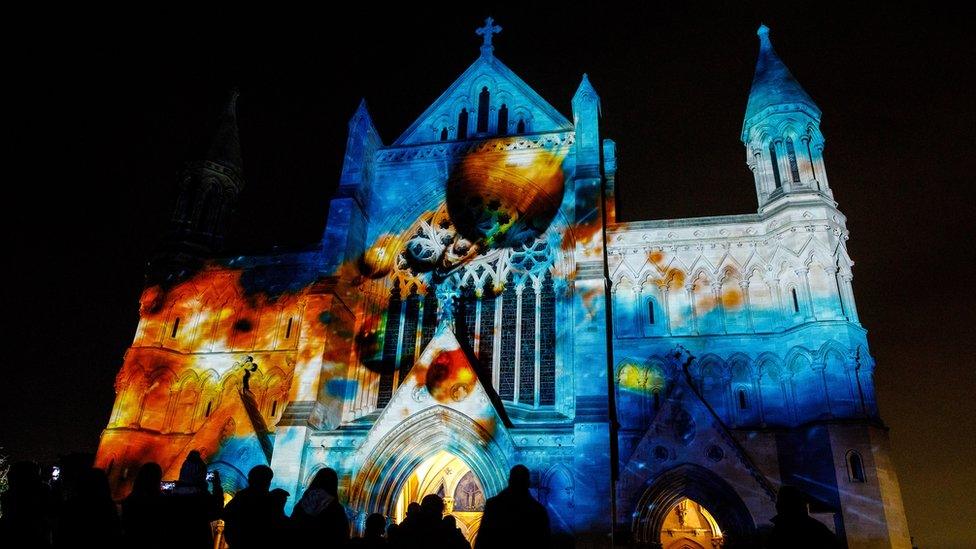
- Published29 September 2019
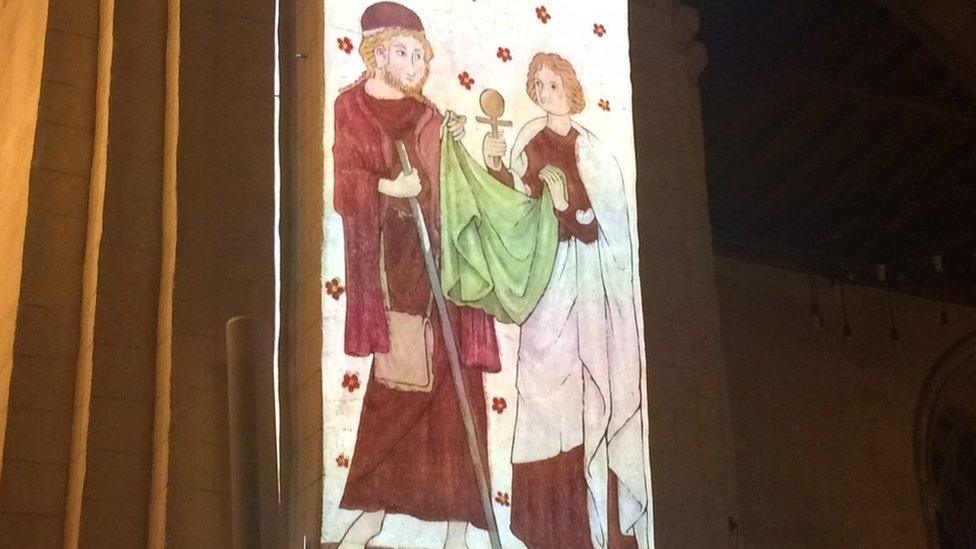
- Published22 June 2019
